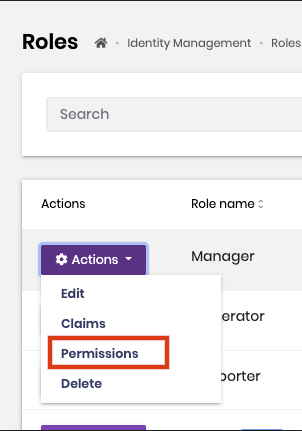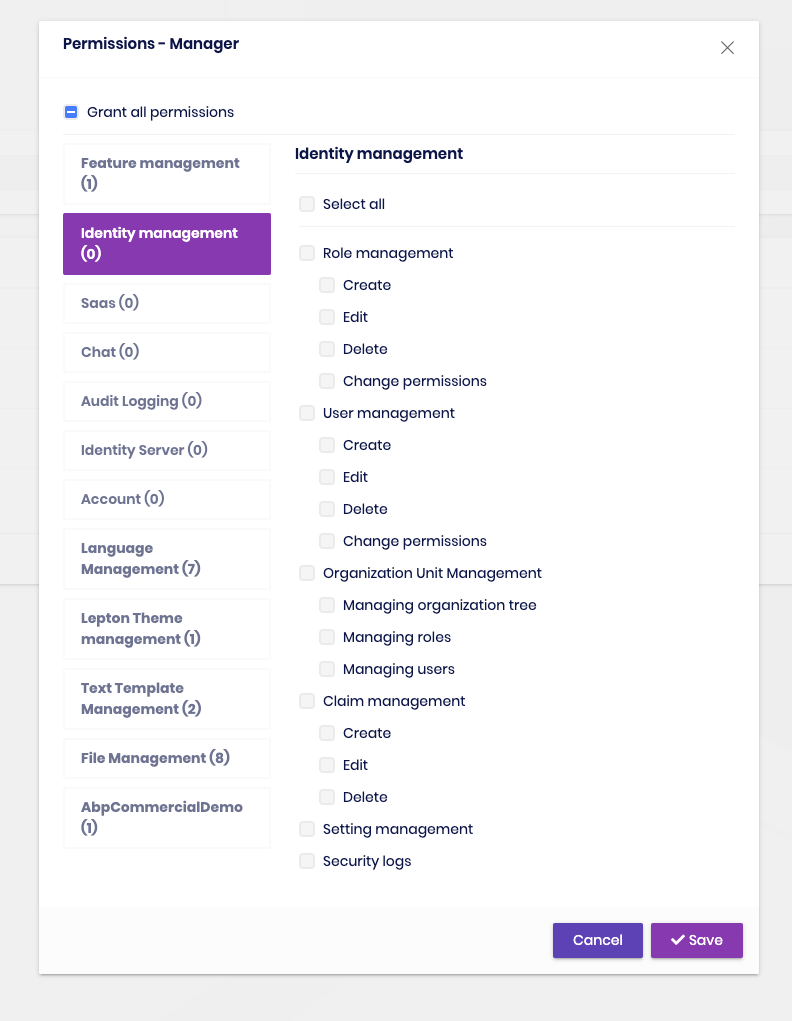Activities of "Mehmet"
Have you compared an app.module.ts file in a new project with the file in your project? If not, you should compare the files in detail. This error may be caused by a difference. Basically, check the app.module.ts in your main project, is the ThemeLeptonModule imported like this?
ThemeLeptonModule.forRoot()
Do you mean 2FA and CAPTCHA features are not supported in Angular UI and even after upgrading to v4.3.
Yes. But these feature can be integrated by replacing some components in Angular UI account public module (login, register, etc. so what you need). Of course,will be need to do something on the backend side.
We're considering the CAPTCHA implementation for Angular UI. We've created an internal issue about that.
Actually, I don't know how you can implement 2FA for resource owner password flow. We will discuss this and let you know the outcome of the discussion.
We've found source of the problem. It will be fixed in next version.
Hi,
Please see this issue. It is the same problem.
See this page for the release dates.
Unfortunately, you cannot use the 2FA. It is not supported in resource owner password flow.
CAPTCHA feature is not implemented yet for Angular UI AccountPublicModule. But you can implement it by replacing the AccountComponent.
Hi
AccountPublicModule have been removed in v4.0. But the module will be available in v4.3.
For now, you should comment out these lines to avoid errors. In v4.2, you can use the authorization code flow. See this blog post to learn how to use the authorization code flow. You can also see the Angular UI v4.0 migration guide.
When v4.3 is released, you can replace the AccountComponent again and use the resource owner password flow. But there are a few difference. AuthService's login method parameters has been changed. See the login method. SetRemember action has been removed, you can totally remove this. AccountModule renamed to AccountPublicModule, you shoud see v4.3 blog post when it is published to learn the AccountPublicModule implementation.
I'd like to ask you a question, why do you use @abp/ng.identity package instead of @volo/abp.ng.identity (commercial identity package)?
You can find out the eIdentityComponents enum in the config entrypoint. Change the import as shown below:
import { eIdentityComponents } from '@volo/abp.ng.identity/config';
or
import { eIdentityComponents } from '@abp/ng.identity/config';
Hi
The tenant id cannot be added to the header while redirecting to the login page. Because, in the authorization code flow, the angular-oauth2-oidc package is using below code to redirect:
location.href = uri;
However, you can send the tenant id as a query parameter like this:
import { OAuthService } from 'angular-oauth2-oidc';
import { MultiTenancyService } from '@abp/ng.core';
export class MyComponent {
constructor(
private oAuthService: OAuthService,
private multiTenancyService: MultiTenancyService
) {};
login() {
this.oAuthService.initCodeFlow(null, { tenant: this.multiTenancyService.domainTenant.id }); // navigates to IdentityServer login page
}
}
We've enhanced the abp-modal. Your problem will be fixed in v4.3. Check the issue below for more details:
https://github.com/abpframework/abp/issues/7461
Hi @rcalv002
There are several module separation methods for Angular:
- You can split Angular modules into JavaScript chunks by applying the lazy-loading modules.
- You can create an Angular library for a module to separate the module and app folder. Thus you can convert your Angular solution to monorepo.
- You can create another Angular app, put your module here, publish the module to the NPM (or a custom NPM server), and you can implement the published module to your real app.
Although there are some methods for module separation, there is no method as described in the Plugin-Modules document.

